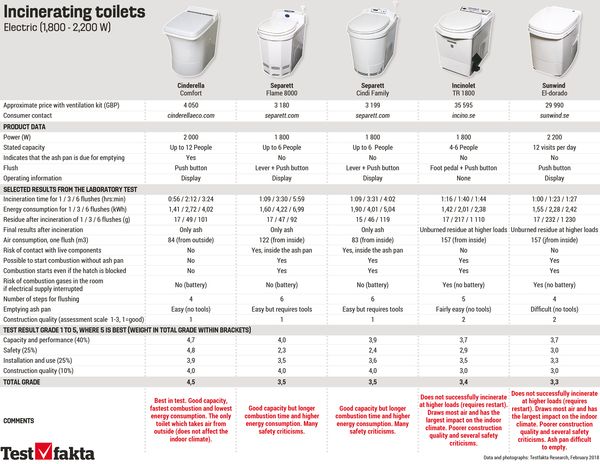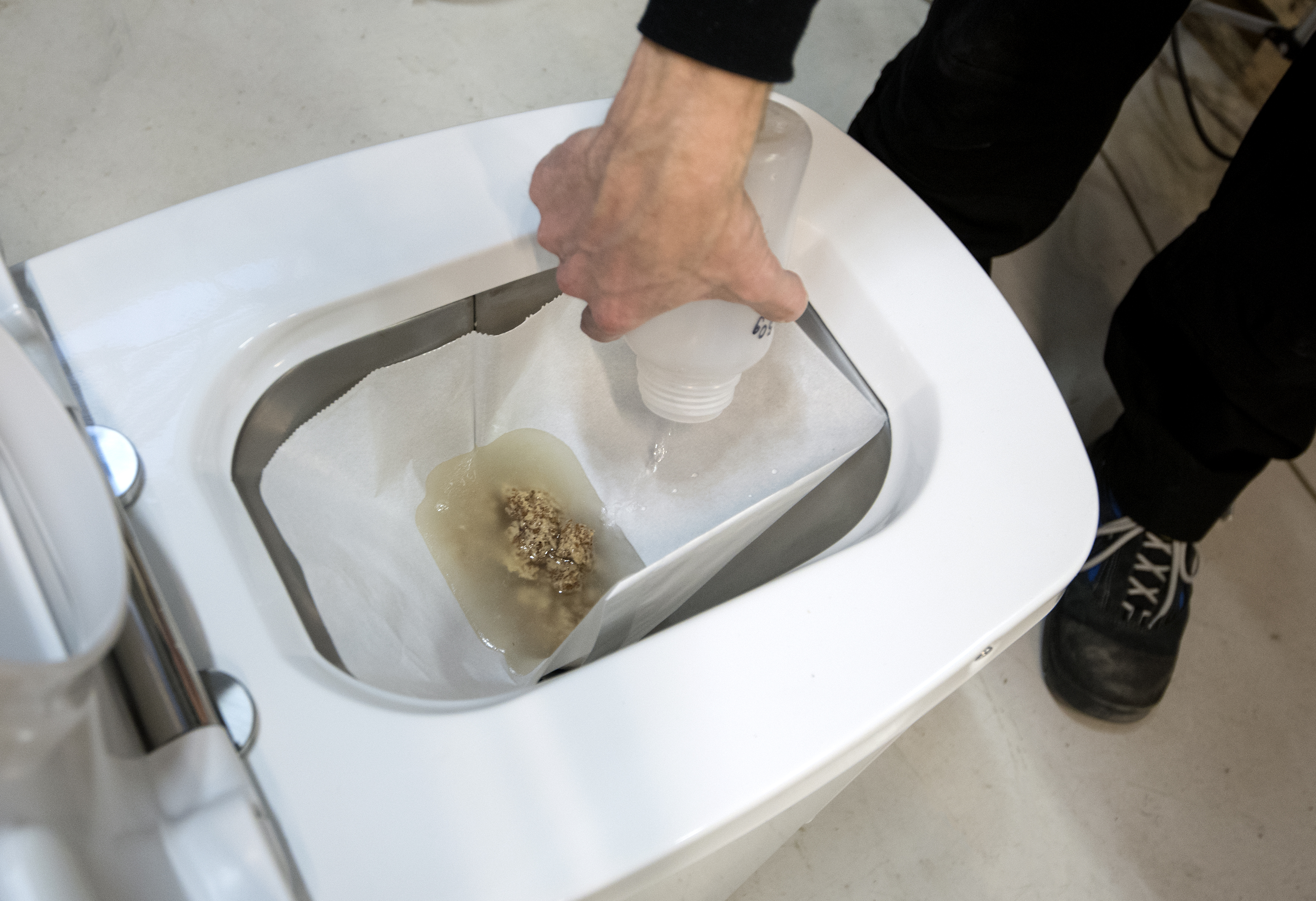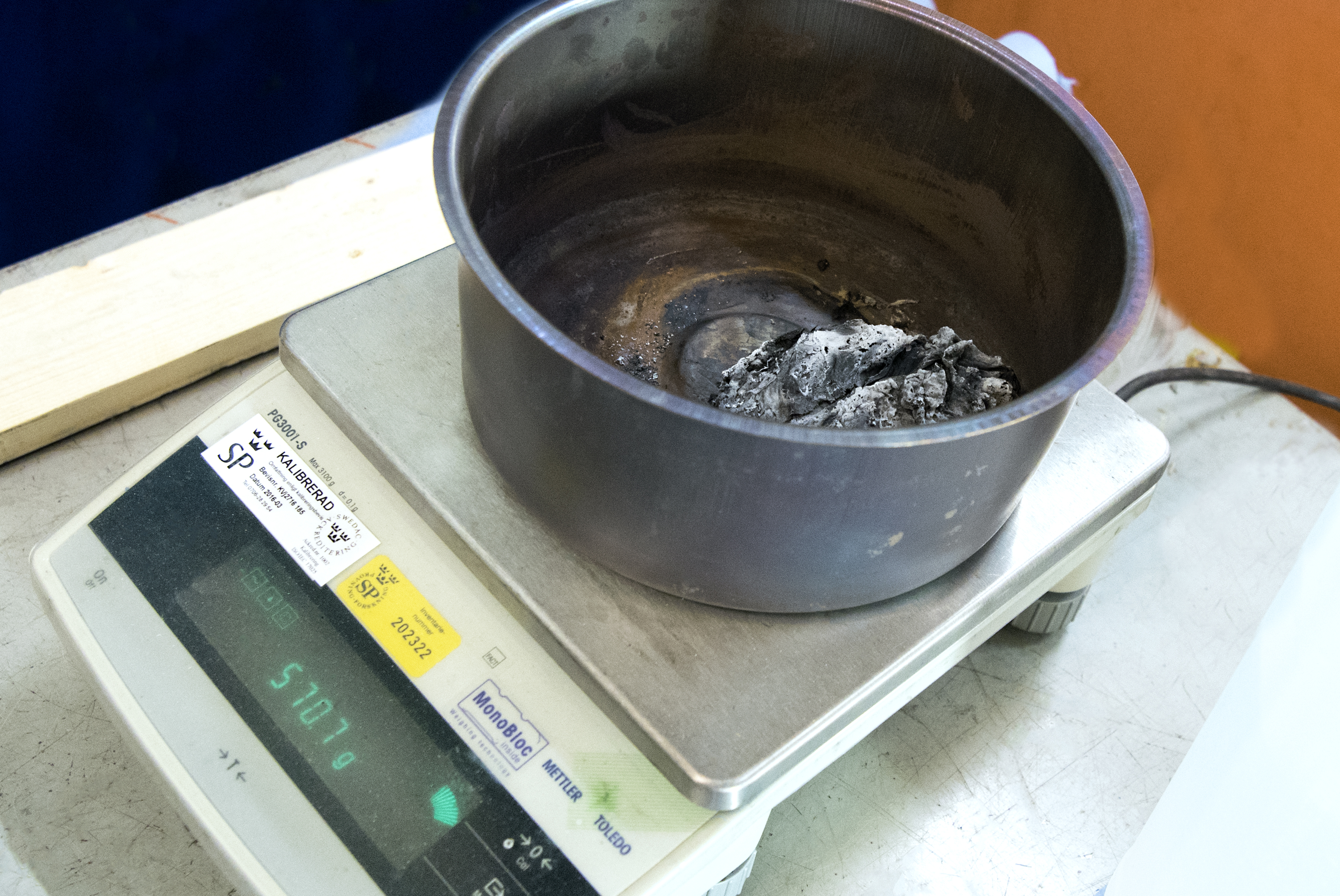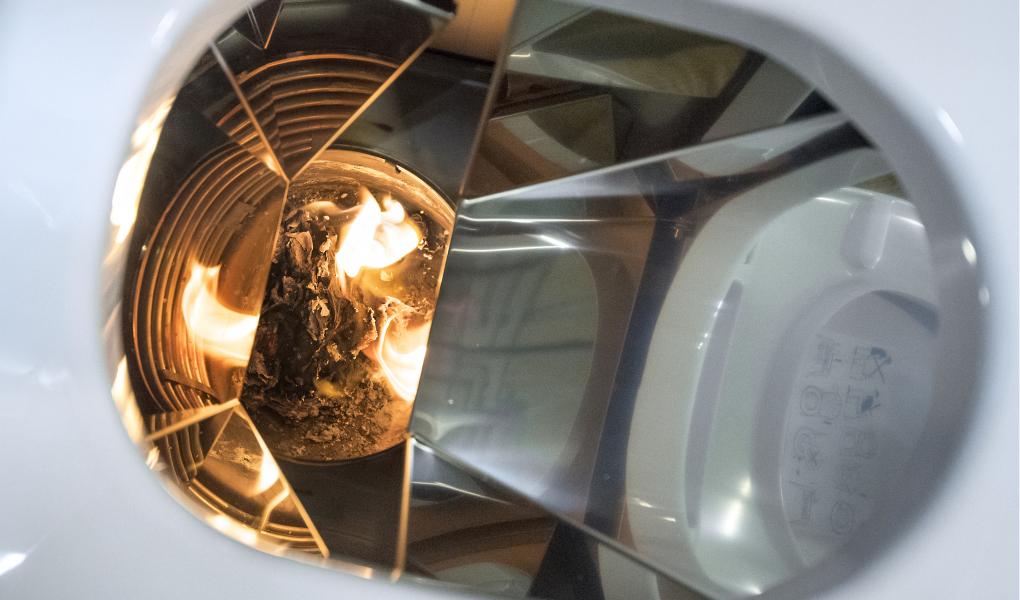Electric incinerating toilets are becoming increasingly popular in properties which do not have running water and sewerage systems. Instead of flushing the waste into the sewer, urine, faeces and toilet paper are collected in a container and burned at high temperature so that only a small quantity of ash remains.
The incineration process involves heating the waste to a temperature of 500–600 °C. The air supply required for combustion is drawn either from the room or from outside the building, depending on how the toilet is designed. The combustion gases are vented through a flue and the ash after incineration is collected in an ash pan in the body of the toilet. If everything works as it should, only a small quantity of ash remains after the toilet visit, and the ash pan will probably not need to be emptied more than once a week.
But how well do the various toilets function? To find this out, Testfakta Research, on the instructions of Cinderella Eco Solutions, carried out a comprehensive laboratory test of all the incinerating toilets sold on the Nordic market.

The laboratory test was carried out by RISE (Research Institutes of Sweden), which investigated electrical and functional safety, capacity, energy consumption and how easy the toilets are to install and use. And it emerged that there are major differences between the various toilets, particularly in relation to incineration capacity and safety criticisms.
By no means all models can successfully incinerate and evaporate faeces and urine if several people go to the toilet one after the other. Two of the toilets, the Incinolet and the Sunwind, left almost 50 percent of the faeces unburned.
When the laboratory investigated safety, serious criticisms were made of several models both in relation to electrical safety and safety in use. With all the toilets except one, it is, for example, possible to start combustion even if the ash pan is not in place, which involves a risk of damage to underlying material and, in the worst case, fire. On several models, the user is at risk of touching electrically live components, and the majority of the toilets start the combustion process even if the hatch to the combustion chamber is not fully closed.
— It should not be possible to start combustion without all parts of the toilet being in place and in the correct position. Nor should it be possible to come in contact with electrically live components while carrying out tasks such as cleaning the space for the ash pan. There is more to do on this with several of the products, says Test Leader Lennart Gustavsson at RISE.
The capacity of the toilets was tested in three steps, with one, three and six flushes. For each flush, 150 grams of synthetic faeces, 250 grams of synthetic urine and 10 grams of toilet paper were added.

Each incinerating toilet was repeatedly filled with the same quantities of synthetic urine and faeces to test how well each model successfully handles toilet visits. Photo: Anna Sigge
Only three toilets successfully managed full incineration with three and six flushes, the Cinderella Comfort, the Separett Flame and the Separett Cindy. After six toilet visits, two of the toilets, the Incinolet and the Sunwind, left almost 50 percent of the faeces unburned.

The ash pan was weighed after incineration to measure the weight in grams of ash or unburned residue which remains after incineration. Photo: Anna Sigge
For efficient incineration, the toilets must have access to an adequate supply of air. During the incineration of a single flush, for example, the Incinolet and the Sunwind draw in a full 157 m3 of air, which is equivalent to the volume of a cottage of around 50 m2. In other words, good ventilation is required to enable the toilet to function efficiently.
During the winter, the toilets which take air from inside the room have a significant impact on the indoor climate, since they suck out heated indoor air. The Cinderella Comfort differs from the other toilets in that it takes air from outside rather than inside the home, so it does not have the same impact on the indoor climate.
— Where toilets take air from inside the home, energy is required to heat up the replacement air. Heating 100 m3 of air on a cold winter day from, say, -10°C to +15°C, takes approximately 0.8 kWh of electricity. This should be added to the energy consumption of the four products which take air from the room,” according to Test Leader Lennart Gustavsson at RISE.
The Cinderella Comfort was the clear test winner, with the highest capacity, the lowest energy consumption and no serious safety criticisms.

